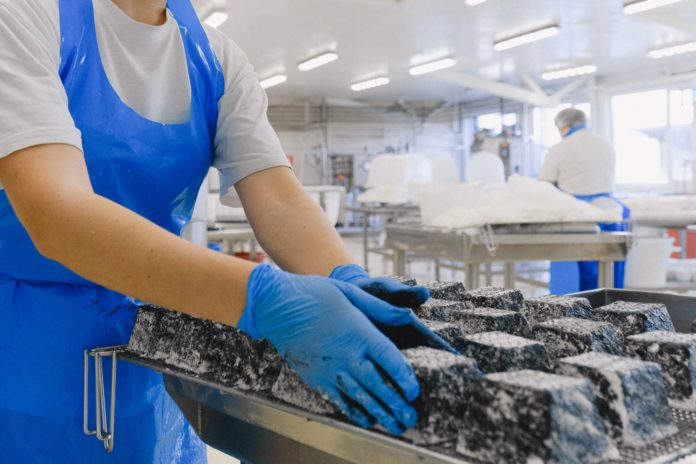
By Bryan Christiansen, founder and CEO of Limble CMMS
Would you like to work in a place where you are not sure whether you would go back home in your truck or an ambulance? Probably not. Everyone prefers working in a safe environment where you can be productive without losing a limb. Building and maintaining a sustainable work environment is critical to retaining employees and ensuring work satisfaction. You can get hit with lawsuits and compensation judgments for not keeping a safe work environment, which could lead to financial ruin.
Unsafe work environments don’t only affect the safety of workers. Production delays, unscheduled machine breakdowns, and subpar product quality are the outcomes of such conditions. Such problems increase operational costs, extend production times, and drive away consumers because of subpar products. Due to these factors, maintaining a safe manufacturing facility is necessary for sustainable operations.
Building safer work environment
Creating a safe working environment in a food manufacturing facility is crucial for both the workers and the company. Not only is it important to prevent accidents and injuries, but it also helps ensure the production standards meet expectations. The following sections cover the five necessities you need to create a safe working environment for the employees in your facility.
Employee training
Errors caused by employees are one of the common problems that cause unsafe work environments for manufacturing facilities. Imagine a forklift being recklessly driven in a facility. It can cause damage to the products it is carrying and the machinery in its vicinity. Hurting other employees with the forklift is also a real possibility. Operators and technicians can cause mistakes that risk other employees and plant assets.
You need to take active measures to train employees in safe practices within the facility. Beyond such general training, each employee should also be given adequate training to perform their tasks in the best possible manner. You should also train them on relevant aspects of OSHA guidelines for their tasks. Motivating employees with the right incentives helps them conduct their tasks diligently, avoiding unintended mishaps. It also helps you retain good employees, reducing the need to train a steady stream of new employees.
Standard operating procedures
Before training employees you need to create standard operating procedures (SOPs) for every task in your facility. The reason many employees make mistakes is that they do not know the correct and safe way to execute tasks. SOPs avoid any confusion employees might have and minimizes the chances of errors. In addition to SOPs, you can create checklists out of them for convenience. Checklists make sure no steps are skipped while performing tasks.
Maintenance
Equipment and machinery that are not maintained well are prone to sudden failures. This poses a danger to the operators working with equipment and production lines. Such instances have to be avoided by all means. You need to have a broad maintenance strategy and a schedule to conduct scheduled maintenance without fail. Without a maintenance schedule, you have to engage in reactive maintenance activities when machines break down. This increases maintenance costs, delays production processes, and makes the work environment unsafe.
Personal protective equipment (PPE)
Adequate personal protective equipment (PPE) is essential for ensuring the safety of employees in a food manufacturing facility. PPE includes items such as gloves, hairnets, safety goggles, face shields, aprons, and shoes, which provide a physical barrier between the employee and any potential hazards in the workplace. These hazards may include chemical spills, splashes of hot liquids, or exposure to harmful bacteria or other microorganisms.
You need to ensure that all employees are provided with the appropriate PPE for their specific job tasks. For example, employees working with chemicals or handling hot liquids may require additional protection, such as chemical-resistant gloves or face shields. Additionally, It’s crucial to make sure that PPE is properly fitted, clean, and in good condition to ensure maximum protection.
Regular inspections of PPE should be conducted to ensure that they are in good condition and replace them as necessary. This will help to reduce the risk of accidents and injuries, and will also help to maintain the quality and safety of the food products being produced.
Plant layout
machines, assembly lines, and workstations need to be arranged in such a manner that the flow of materials happens fast with limited overheads. The plant layout should not be the cause of disruptions in production.
Suppose an employee has to traverse through a path that has many machines, cables, conduits, etc., in the way. In such a case, there is a high chance of an employee tripping on something and hurting themselves.
Similarly, bad design can cause transportation troubles and low product quality. It can also be a source of contamination in food products. You need to invest in creating an intelligent design for the plant layout – take into account the requirements and intricacies of your plant.
A safe work environment
Creating and maintaining a safe work environment in a food manufacturing facility is crucial for the well-being of employees and the success of the company. By providing adequate personal protective equipment, offering regular employee training, and implementing standard operating procedures, you can help ensure that your facility is safe and compliant with regulations.
Additionally, regular maintenance and inspections of equipment and machinery are important to minimize the risk of accidents and breakdowns. By taking these steps, you can not only ensure the safety of your employees, but also improve production standards and maintain customer satisfaction. Now it’s time for you to take action and implement these safety measures in your food manufacturing facility, to secure the well-being of your employees and the success of your business.
 Bryan Christiansen is the founder and CEO of Limble CMMS. Limble is a modern, easy-to-use mobile CMMS software that takes the stress and chaos out of maintenance by helping managers organize, automate, and streamline their maintenance operations.
Bryan Christiansen is the founder and CEO of Limble CMMS. Limble is a modern, easy-to-use mobile CMMS software that takes the stress and chaos out of maintenance by helping managers organize, automate, and streamline their maintenance operations.









